About a month back, the day before my birthday, on the twentieth of September, released a popular novel, Brisingr. I had finished reading the novel within a week after I got it, but had other things in my head to blog about.
Particulars:
Novel: Brisingr
Author: Christopher Paolini
Publisher: Random House/ Double Day
**
To people who do wonder what Brisingr is about, let me tell you a little about its prequels, Eragon and Eldest. Those who know about it may skip this part and go to the review.
*Start story*
Eragon is a farm boy who is baffled when a polished blue stone appears before him. Since he is from a poor family, he takes it, hoping to sell it for a good price. Eragon's mother is Selena, who has not been since Eragon's birth. She had left him to be raised by his uncle, Garrow and his late wife Marian to raise them as their own. Garrow's son, Eragon's cousin, Roran also lives with them at the secluded village called Carvahall.
Enter Saphira: The stone that Eragon takes cracks, and a dragon comes out. Eragon touches, and thence, the dragon, whom he names as Saphira, and he have an irrevocable bond fromed between them. And he becomes one of the legendary dragon riders.
The story of dragon riders starts when the elves bond with dragons eons ago, pooling their powers to form great peacekepers, and what we can call, 'an Ideal duo', who have very few limitations compared to any other race mentioned in the book(Elves, Dwarves, Humans, Urgals, Ra'zac, etc). Among the riders rises a evil king Galbatorix, who kills every last of those riders, and declares himself the king of the land Alagaesia.
Eragon, is the only free rider outsied Galbatorix's crutches.
Once this message reaches the king's ear, he sends his grotesque servants, the Ra'zac, to bring Eragon and Saphira to him. They both however escape, but Garrow, Eragon's uncle dies.
To seek revenge, Eragon sets out to trace Ra'zac with the help of Brom. In the process, learns that Riders are magicians, etc etc. Near the Ra'Zac's lair, Brom dies in an ambush.
Enter Murtagh: Murtagh, a young guy who exiled the king's fortress, claims himself to be the son of on of the King's Foresworn(Foresworn are like Death Eaters of HP), but who defies the king.
The trio later rescue an elf during their travels and reach Varden, a rebel against the King, with whom they decide to join. Here, Eragon finds himself starting to like the elf, Arya.
The climax of the story has a war where Eragon fiercely duels with a shade(man possessed by spirits), and kills him, but ends up suffering chronic injuries on his back. Also an old man appears in Eragon's reverie, who offers to explain everything that happened to Eragon since the whole plot began.
*End Eragon*
*Start Eldest*
Eldest begins soon after Eragon. This story contains 3 storylines mainly, Eragon's, Eragon's cousin, Roran's and that of Nasuada, who is the next leader of Varden, after her father Ajihad Dies in the war.
Eragon's storyline: Eragon and Saphira set out to the place of elves, along with a dwarf Orik, and Arya, the elf whom he rescued on his way to Varden. Murtagh goes missing, and is presumed dead. On reaching Du Weldenvarden, the place of elves, Eragon discovers that Arya is the daughter of Elven Queen Islanzadi, and another rider, the eldest of all that Eragon had known exists. He is the man who brushed across Eragon's ming in the war that had occured. His name is Oromis, and his dragon is Glaedr. Oromis and Glaedr teach a lot of things to Eragon and Saphira regarding the world of Riders, their history, magic summoning energy, communication through mind and also a little information about Brom. Brom was a rider, coincidentally his dragon, Saphira's namesake died in a duel with Morzan. Morzan is Murtagh's dad, Galbatorix's most favoured servant. Brom then kills Morzan and his dragon, and then takes his sword, which now is with Eragon.
Also, a once-in-100-years ceremony called the Blood-Oath ceremony takes place, and there some of the elves magically cure all the injuries of Eragon, and make him substantially more powerful than what he was, apt to be called an Elf-Human crossbreed. Realizing that his life now nearly parallels to that of an elf, he takes it to confess to Arya about his love for her. However, she rejects telling him that there is a very big difference in their ages, and that she does not regard him more than a good friend.
Soon news comes about a war in Surda by Varden against the King, and Eragon leaves for it.
There he faces another rider - Murtagh, who tells him that Morzan was Eragon's father too, and that both of them were brothers. The war ends leaving bitter thoughts in Eragon's mind, and Murtagh claims Morzan's sword as his Eldest son, and spares Eragon.
Roran's Storyline: Roran is completely distressed after his father's murder, and blames Eragon for all that occured, and curses him for his absence. The king's men return again, to kidnap Roran and use him against Eragon. But in what occurs as a retaliation, a lots of people of Carvahall die, and Katrina, Roran's betrothed, is abducted by the Ra'zac. Roran vows to traverse through the Spine, across the land along the sea, and seek refuge in Surda, along with the rest of the people in Carvahall. With a lot of effort, he mobilizes the people and takes them. He finally reaches Surda during the war, contributes to the war and there, meets Eragon, the dragon rider.
Nasuada's Storyline: This lady's storyline is somewhat dry and boring to some extent. It mainly refers to her migration of Varden from one part of the land to other, and the challenges faced in managing. Also some politics regarding the administration of Varden is mentioned.
*End Eldest*
--------------------------------------------------------------
BRISINGR: REVIEW
*Disclaimer: You may find me mentioning many incidents from the story, hence spoiling the book for those who haven't read it. Beware.
This book can be aptly compared to deathly hallows, since both are very much eventful, but lack a proper story.
It is mentioned that there were only three dragon eggs left in alagaesia, under Galbatorix's crutches. One of them was smuggled out by Brom, and out of it came Saphira. The second one hatched for Murtagh, the dragon's name, if I haven't mentioned, is Thorn. The third one was very much expected, but there is no information regarding this in this book, which is one main drawback of the story.
The full name of the book is actually:
Brisingr: The seven promises of Eragon Shadeslayer and Saphira Bjartskular.
And the title, to some extent is apt. The story mainly describes the different promises that Eragon and his dragon saphira have made to many people.
Here they are:
- Eragon and Saphira promise Roran to join on his mission to save Katrina from the Ra'zac, and avenge the death of Garrow.
- The duo swear fealty Nasuada as a political stunt to earn trust.
- They also promise Oromis that they shall mention about their existance to no one.
- They join the Durdrimst Igneitum clan of the dwarves, allowing their king to adopt him into the dwarf race, thuse gaining all the rights reserved to the dwarves.
- They promise to assist Elven Queen Islanzadi during the times of need.
- He promises to cure a human girl of his untentional curse which becomes a great fiasco in Eldest, though I didn't mention that.
- Saphira promises to rebuild Isidar Mithrim, a sort of monument of the dwarves.
Eragon keeps up most of his promises throughout the book. But the book does not attract us as much as the others did. Also, there's a lot of spicy girlish stuff regarding the love story of Roran and Katrina since she is rescued. They get married and expect a child at the end of the book.
Also a lot of Dwarf politics is described in the process of electing a new king of the dwarves, since the old king is killed by Murtagh during the last war.
Few of the new elements mentioned in this book are:
>> The Nomad Language: It is the language of the tribe Nasuada is actually native of. Though there is only one word mentioned from their language, they are mentioned in one of the chapters, where a politically sensitive incident takes place.
>>Art of swordmaking: Eragon has lost his only blade to Murtagh and seriously needs a weapon to guard himself. He eventually gets a new blade, which he names 'Brisingr' and the process takes place in a very unusual and complicated way. But this is described and explained excellently. Paolini reveals his sources for information regarding this process.
As we proceed through the story, many facts, which were actually predictable from the information in the previous books, are revealed, like, Brom being Eragon's father and not Morzan, Arya's first love and existence of Sloan, a psycho butcher of Carvahall, who is Katrina's father.
IN a nutshell, the book is an excellent piece of fantasy and imagination, worth reading, but not as good as the previous ones. But since most of the things were predictable, and some of the expectations, which the book did not live up to, I would rate the book a little lower than its prequels.
My Rating:
Characters: 2.5/5
The characters in this book were too mechanical and not much of emotions was seen in them, save for Roran, who lives on his emotions. Moreover, throughout the series, as my friend pointed out, "Arya's perfection is her flaw," she is too perfect to be realistic. Also, Eragon does not think about his feelings for Arya in this book, also others seem stoic.
Description: 5/5
Paolini's description is perfect for a fantasy story, neither too long like Tolkien's, nor two consise, or jovial like Rowling's. It gives a richness to the story and he makes even the most uneventful and boring places of the story worth reading. You'll never feel like skipping any part of the story.
Concept: 4.5/5
The whole concept of the Inheritance Cycle(Eragon-Eldest-Brisingr-4th Book) is excellent and not any less in this one. But it did disappoint me at times where I found many similarities with other fantasy novels...names, setting of lairs of different characters and others. Also I had some difficulty in scaling the map of Alagaesia, since it different durations to travel the same distance at different occasions in the book. It may be due to the gradual increase in Eragon's power, but yet it, at times, confuses me.
Sense: 5/5
Usually, a fantasy story is at its best when you can put yourself into it and imagine what you'd feel like, and you can actually do that here. Most of the concepts regarding magic and other fantastic things that are usually exaggerated in other novels of the fantasy genre, is presented here excellently, showing that everything in this world has its own limitations, and his work makes very good sense, and some of it has been apparently been experienced by people on real-earth(I read similar things in a few spiritual books).
Plot: 3/5
The plot is interesting, but has a few standard things that one tends to encounter in most of the books, making it look like a story format, just like one for an Indian commercial film. For example, the protagonist is the 'chosen one' and that he is an orphan...well, its there in many more books, not just HP. But a good aspect of the plot is that Christopher Paolini has not yet revealed Galbatorix so far in the three books. Only his voice is heard partially in Brisingr. This gives a tempo to the series regarding what Galbatorix would be like. Another good part is that, Unlike Sauron, or Voldemort, Galbatorix is not someone people fear to name, which does not raise the expectations of the reader regarding how tough it would be to kill the king at the end. It was a major flaw in Harry Potter series, and to an extent, disappointing in the LOTR series.
----------------------------------------------------------------------------
End Word:
On the whole, I enjoyed the book, but always had a feeling that something was amiss, and thus lost the excitement as I reached the end of the book. Also, I don't really feel like reading the book again, as I did, when I had read Eragon and Eldest.
Anyway, all is not to be blamed on Christopher Paolini, because I know how boring it is to complete a series, or even a novel, when thoughts flood your mind. I experienced such a thing when I tried my hand at writing. In fact I'm still stuck at page number 192 of my story. Moreover, Paolini is quite young, and is debuting into the world of novels with this series, thus lowering our expectations a little is a better idea.
But above all, Brisingr, and its prequels, has a number of lessons of life to learn, and a wonderful set of books to read, especially for people coming of age, as it contains things that one should know when he is being kicked out from the comforst of home, into the big-wide outside world, a place where everything is deceptive, a place where the actual story of one's life begins.





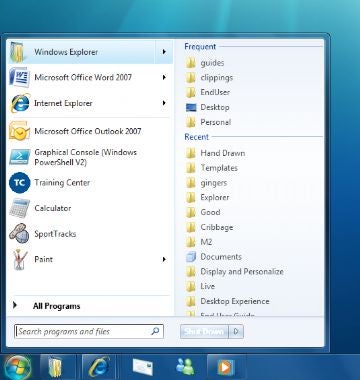

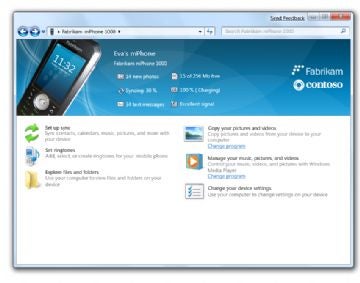
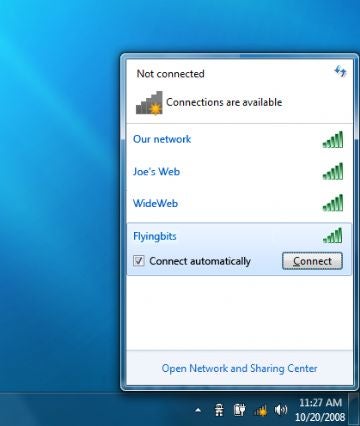
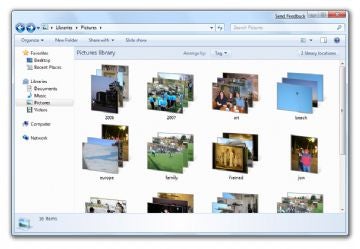
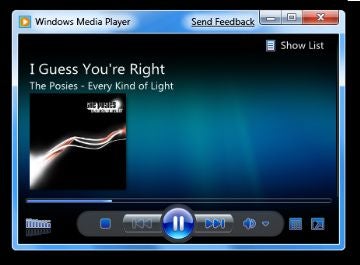

.jpg)